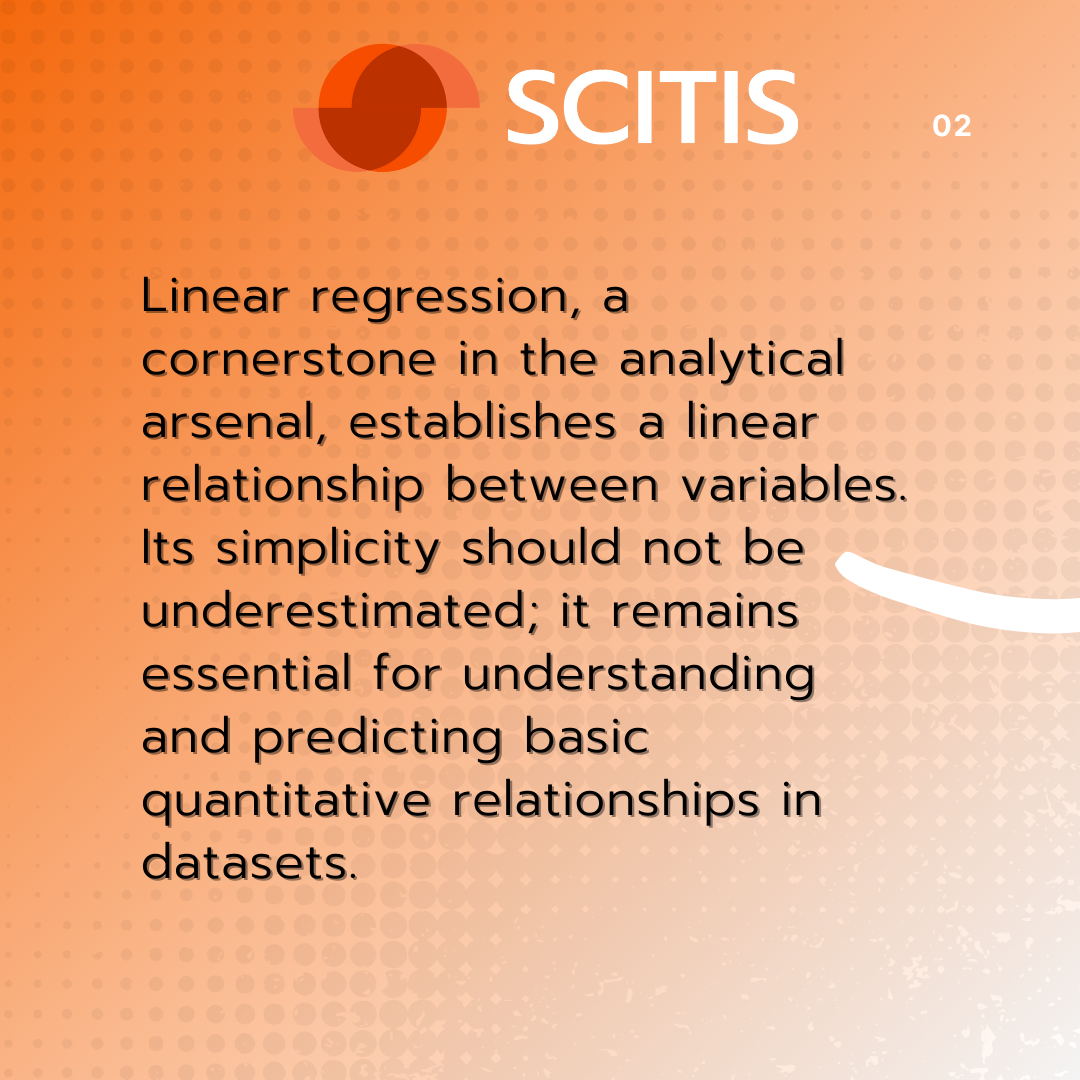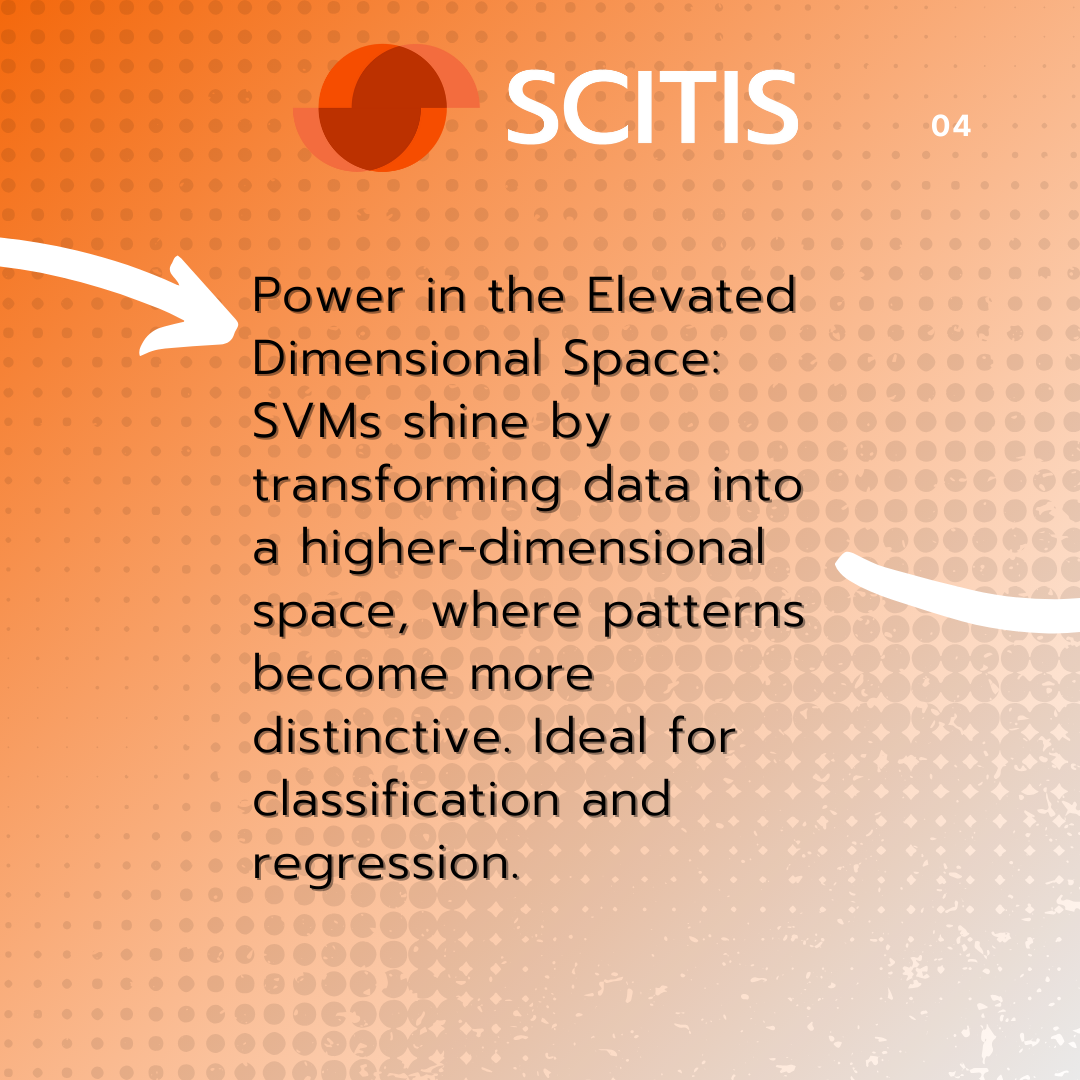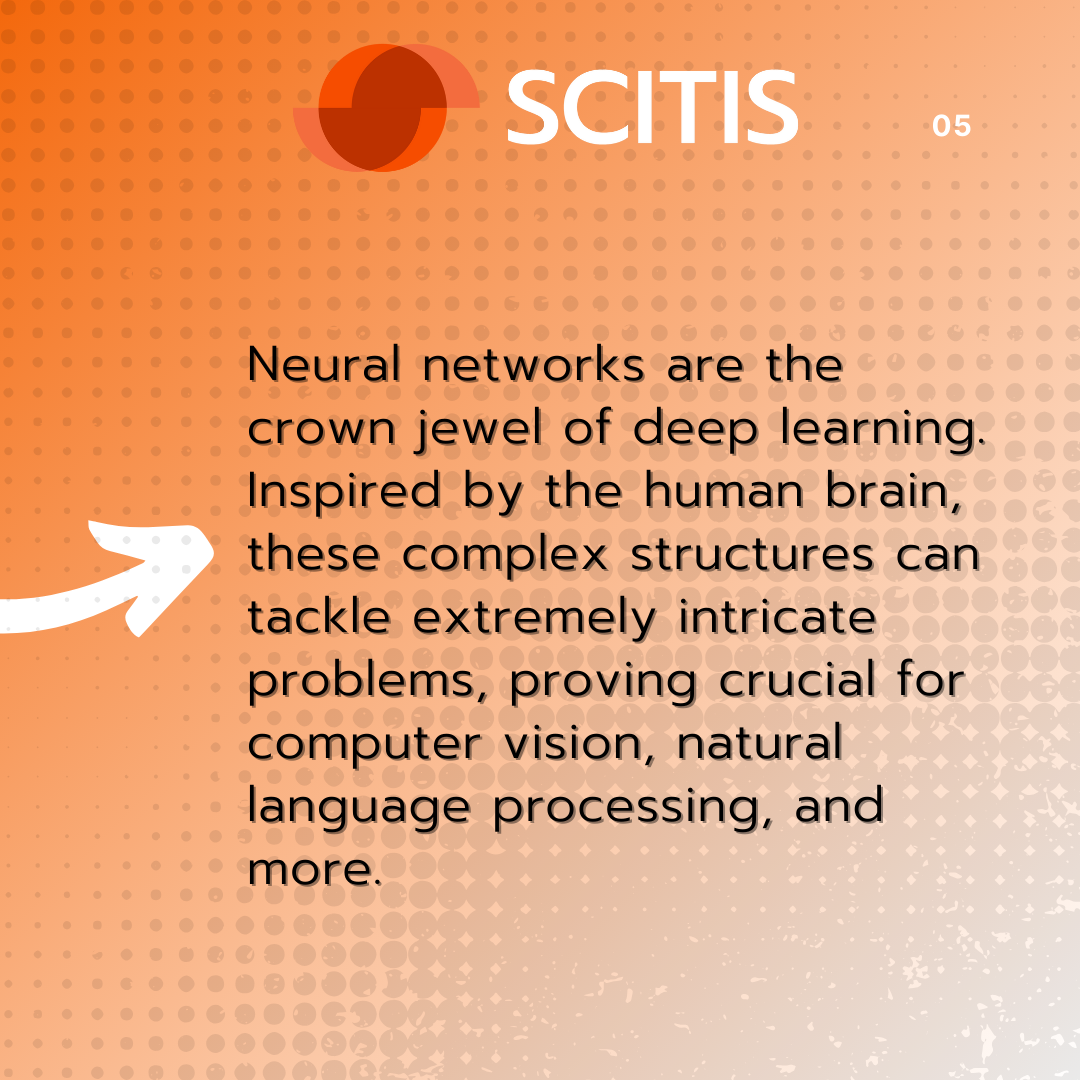In the captivating realm of analytics, the choice of the right algorithm serves as the compass steering models toward excellence. In this article, we will explore the fundamental types of algorithms used in analytical models, uncovering how each plays a unique role in extracting valuable insights.
1. Linear Regression: Time-Tested Simplicity:
Linear regression, a cornerstone in the analytical arsenal, establishes a linear relationship between variables. Its simplicity should not be underestimated; it remains essential for understanding and predicting basic quantitative relationships in datasets.
2. Decision Trees: Breaking Down Decisions Intuitively:
Decision trees are like interactive maps that break down decisions into smaller, manageable options. Their ability to handle both categorical and numerical data makes them versatile tools for classification and regression.
3. Support Vector Machines (SVM): Power in the Elevated Dimensional Space:
SVMs shine by transforming data into a higher-dimensional space, where patterns become more distinctive. Ideal for classification and regression, SVMs find strength in their ability to effectively handle non-linear data.
4. K-Means: Exploring Patterns in Chaos:
The K-Means algorithm is a leader in clustering, grouping data into coherent clusters. Its ability to find patterns and segment data is crucial for understanding the internal structure of complex datasets.
5. Neural Networks: Emulating the Power of the Human Brain:
Neural networks are the crown jewel of deep learning. Inspired by the human brain, these complex structures can tackle extremely intricate problems, proving crucial for computer vision, natural language processing, and more.
6. Random Forests: The Strength of Diversity:
Random Forests harness the power of multiple decision trees to enhance accuracy and mitigate overfitting. Their ability to handle large datasets and diverse features makes them a powerful choice.
7. Reinforcement Learning Algorithms: Continuous Learning for Optimally Adaptive Decisions:
Reinforcement learning algorithms, central to reinforcement learning, excel in sequential decision-making. Their ability to adapt and learn from experience is essential for applications such as robotics and strategic games.
Uncover the Power of Scitis Group in Implementing Advanced Algorithms
At Scitis Group, we not only comprehend the complexity of these algorithms, but we master them. Our expertise in implementing linear regression, decision trees, SVMs, K-Means, neural networks, random forests, and reinforcement learning algorithms positions us as leaders in the art of advanced analytics. Discover how our algorithmic experts can elevate your analysis to new heights. Turn data into decisions with Scitis Group today!





